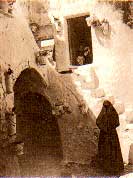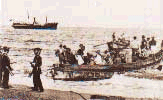No other corner of Andalucía can boast such a rich and close heritage with their Moorish past a does Mojácar.
With her exceptional situation as a lookout dominating the surrounding terrain, Mojácar has been settled by many and varied peoples since antiquity.
Populated since the bronze age around 2000 BC, soon, traders such as Phoenicians and Carthaginians arrived to serve the growing communities.
Under Greek dominion, the settlement was called Murgis-Akra, from whence came the latinized Moxacar, the Moorish Muxacra and finally the current name of Mojácar.
The north African moors established themselves in Spain in the early VIII century and the province of Almería became firstly under the authority of the Caliphate of Damascus and later on was ruled from Cordoba. Under this second enlightened rule, Mojácar quickly grew in size and importance. With the coronation of Mohammed 1st in Granada, Mojácar and its lands became incorporated into the Nazari sultanate, and the town found itself on the frontier with the Christian forces to the east. Watchtowers and fortresses were built or re-enforced during the XIV century, which nevertheless did little to discourage Christian incursions and fierce battles like the bloody event of 1435 where much of the population of Mojácar was put to the sword.
On June 10th, 1488, the leaders of the region agreed to submit to the Christian forces, although Mojácar´s alcaide refused to attend,considering his town to be already Spanish

"Mujeres de Mojácar a la usanza" |
|
At that time occurred the well-known meeting at Mojácar´s Moorish fountain, where a pact of free association between the local Moors, Jews and Christians was agreed upon. Mojácar once again began to expand until the early XVIII century, when the census of the time recorded 10.000 souls. Around the middle of the XIX century, Mojácar began another period of decline.
The records state that several severe droughts brought about this drop in the town’s fortunes, with a consequent emigration to northern Spain, Europe and South America.
The depopulation of Mojácar was reaching worrying proportions by the 1960´s when tourism began to reverse the trend. Today, Mojácar remains loyal to her past with her architecture, the whitewashed houses and the openness of her subjects, who inherited the ways of understanding and sympathy from their forebears.

" Emigrantes embarcándose en Garrucha, camino de Oran, 1905."
|
|